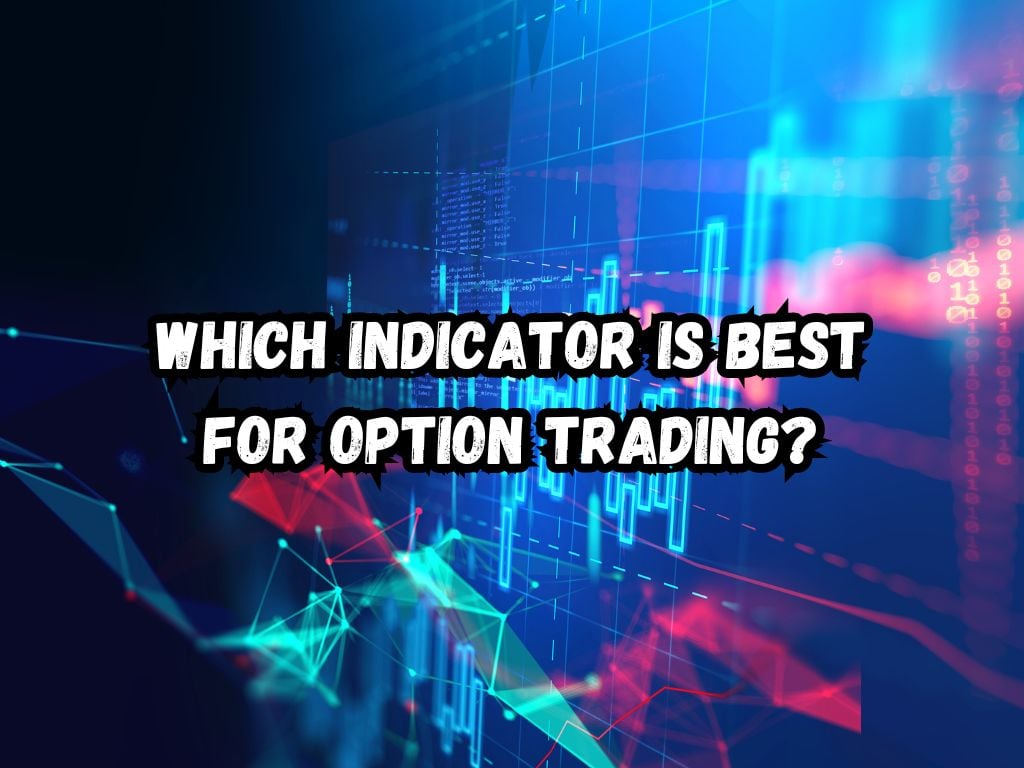In the fast-paced world of finance, options trading has emerged as a key strategy for traders seeking flexibility and hedging opportunities.
With its unique advantages, understanding and mastering the use of technical indicators is pivotal in navigating this space effectively. So, which indicator is best for option trading? Let’s learn
Understanding Options Trading
At its core, options trading involves contracts that grant the buyer the right, but not the obligation, to buy or sell an underlying asset at a predetermined price before or on a specific date.
Comprising calls and puts, options offer a world where strategy plays a crucial role in managing and leveraging market movements.
The Role of Indicators in Options Trading
In the realm of options, indicators serve as tools to predict market trends and directions. They assist traders in making informed decisions by providing insights into the potential movements of stock prices.
Technical analysis, with the aid of these indicators, becomes an invaluable component of a trader’s toolset, enabling strategies that can adapt to market dynamics.

Which Indicator Is Best for Option Trading?
When diving into the specifics, it’s clear that certain indicators have proven essential for successful option trading strategies.
Trend Indicators
Moving Averages: Simplifying the price data over a period helps reveal the underlying trend. By smoothing out price fluctuations, moving averages offer a clearer view of the trend direction. Traders often rely on these indicators to decide on the right moment to enter or exit a trade.
MACD: By showing the relationship between two moving averages of a security’s price, the MACD uncovers changes in trend strength, direction, momentum, and duration. The MACD histogram, in particular, is a powerful tool for identifying buy and sell signals.
Momentum Indicators
RSI: The Relative Strength Index measures the magnitude of recent price changes to evaluate overbought or oversold conditions in the price of a stock or other asset. It’s invaluable for options traders looking to gauge the momentum and anticipate potential reversals.
Stochastic Oscillator: This momentum indicator compares a particular closing price of a commodity to a range of its prices over a certain period. It provides insights into potential trend reversals, making it a strategic tool for entering or exiting trades.
Volatility Indicators
Bollinger Bands: With a moving average as its foundation, flanked by two standard deviation lines, Bollinger Bands measure market volatility. Traders use expansions and contractions of these bands to make decisions on options strategies, particularly in markets known for significant price movements.
ATR: The Average True Range indicator offers insight into market volatility by decomposing the entire range of an asset price for a specific period. Adjusting strike prices and expirations based on this volatility can significantly impact the success of an options strategy.
Volume Indicators
Volume Oscillator: The Volume Oscillator measures the trend of volume changes, providing insights that, when combined with other indicators, help confirm the strength of a trend.
On-Balance Volume (OBV): This indicator uses volume flow to predict changes in stock price, offering options traders a gauge on market direction. Observing divergence in OBV can act as a signal for strategic trading moves.
Integrating Indicators into Your Options Trading Strategy
No single indicator offers a magic solution. Successful traders often combine diverse indicators to create a robust analysis framework.
Adjusting settings to fit personal preferences and time frames enhances the relevance of these tools to individual trading strategies.

Practical Tips for Selecting and Using Indicators in Options Trading
Beginners should start with practice accounts to hone their skills without financial risk. Staying informed about financial news helps in understanding market movements and indicator relevance.
Continuously reviewing and adjusting strategies based on outcomes and changing market conditions remains crucial for sustained success.
Frequently Asked Questions
Can technical indicators be used for both call and put option trading?
Yes, they apply to both, aiding in making informed decisions on when to buy or sell.
How do I know which combination of indicators is best for my trading style?
Trial and analysis with a practice account can help determine the most effective combination for your strategies.
Are these indicators applicable to all financial markets where options trading is possible?
While they are broadly applicable, the effectiveness of each indicator can vary across different markets.
How often should I review and adjust the indicators I use in my trading strategy?
Regular review, aligned with changing market conditions and personal trading outcomes, is advisable.
Can these indicators eliminate the risk of losses in options trading?
No. While they can help make informed decisions, they cannot eliminate the inherent risks of trading.
Conclusion
Navigating options trading with the aid of indicators demands a blend of knowledge, strategy, and adaptability. While no formula guarantees success, a thoughtful approach to selecting and employing the right indicators can significantly enhance decision-making processes.
Continuous learning and strategy refinement are the hallmarks of a proficient options trader. In crafting an approach to options trading, the considered use of indicators unfolds as a critical element.
Mastery over these tools, combined with a well-thought-out strategy, paves the way for navigating the complexities of the options market with greater confidence and efficiency.


 Tags:
Tags:










